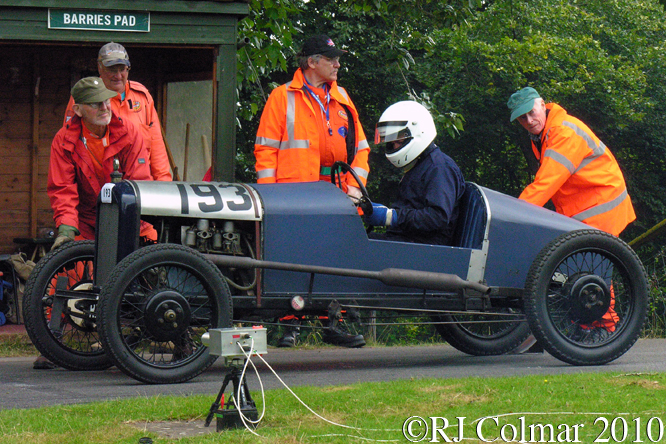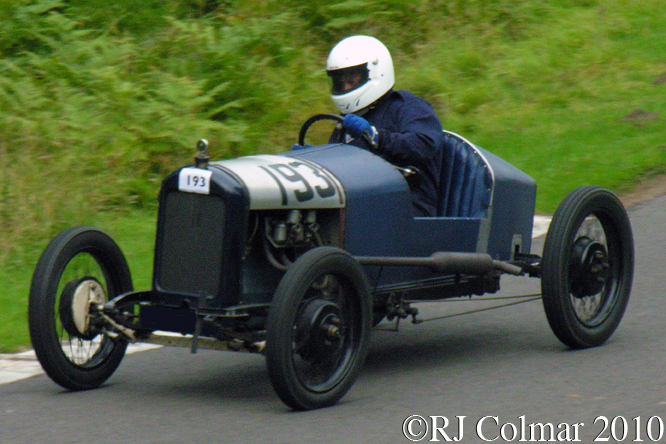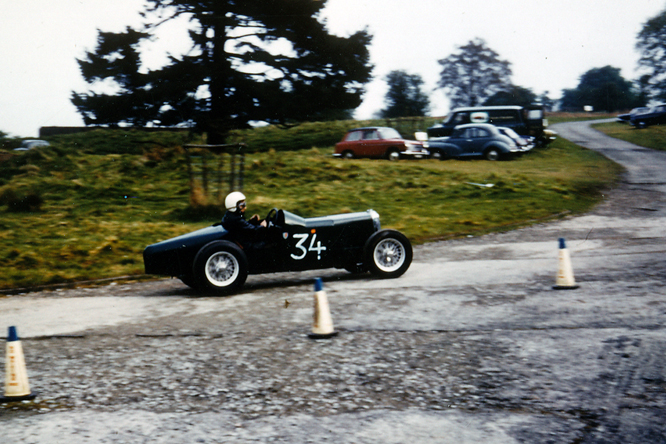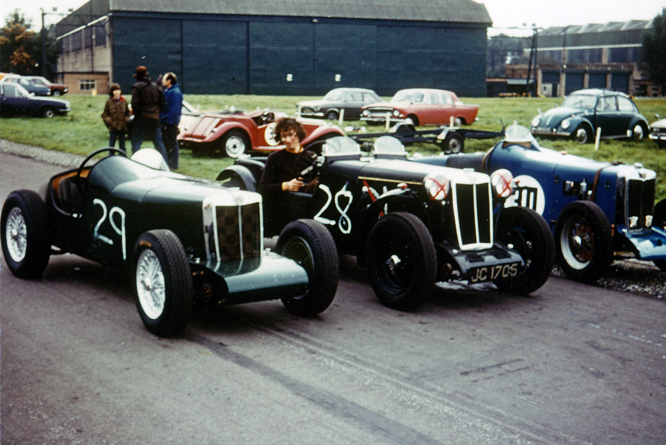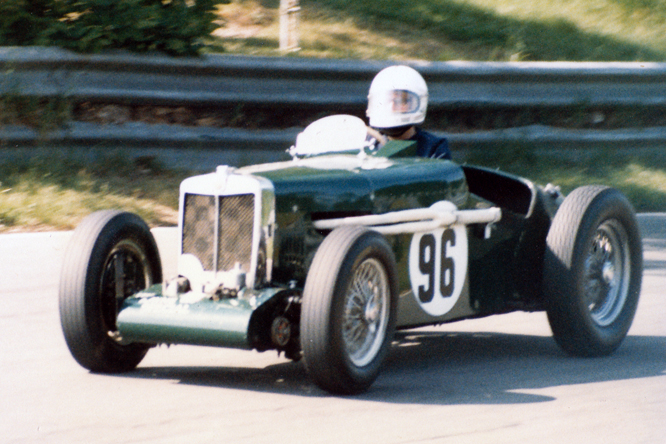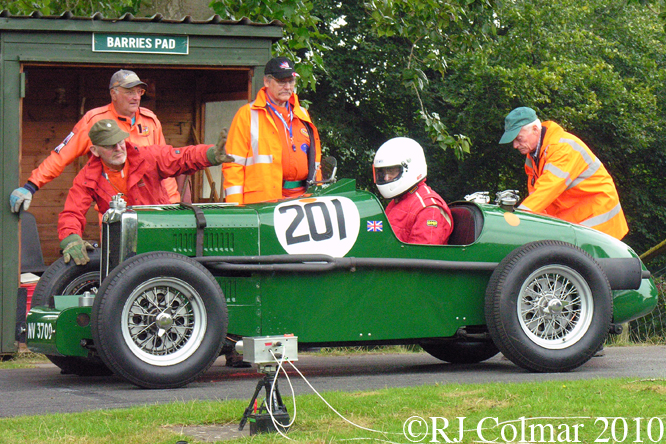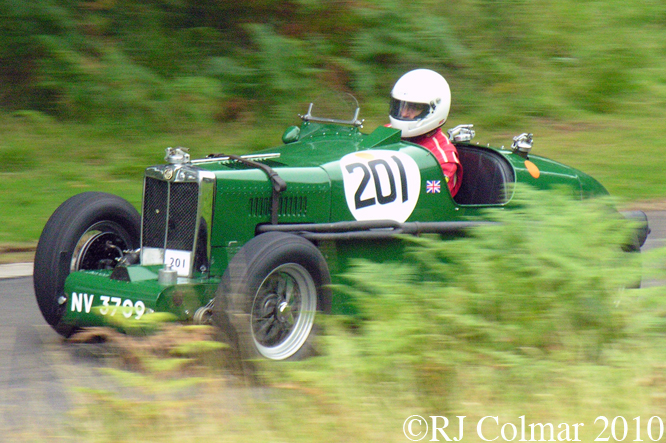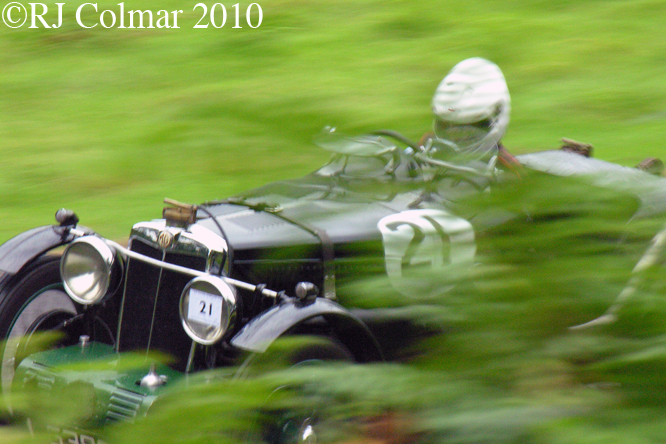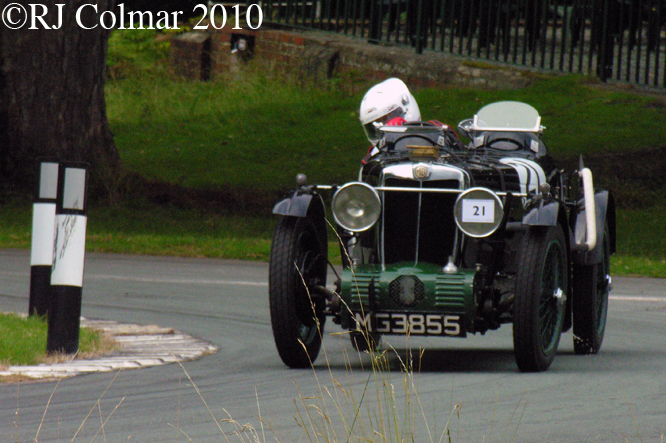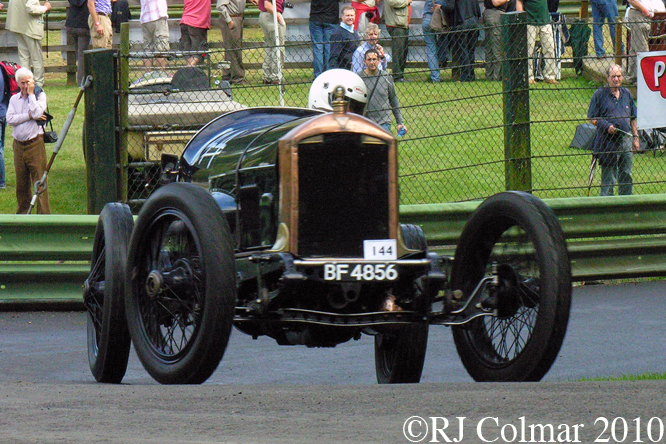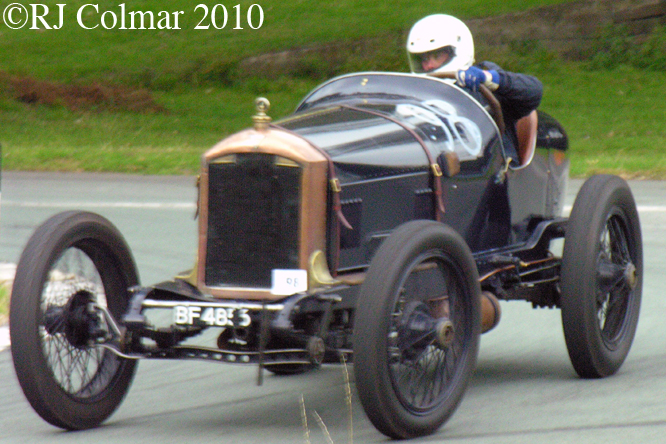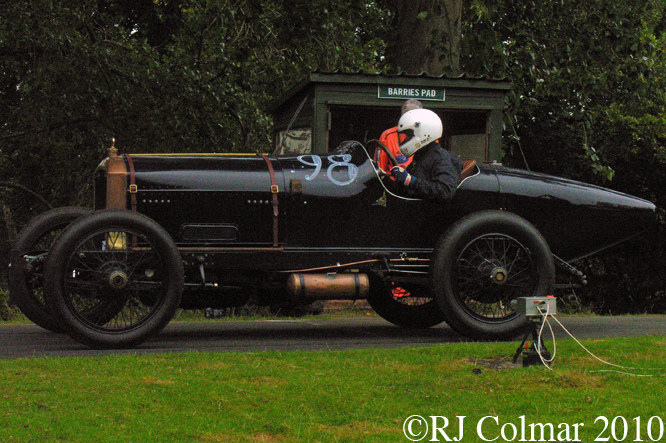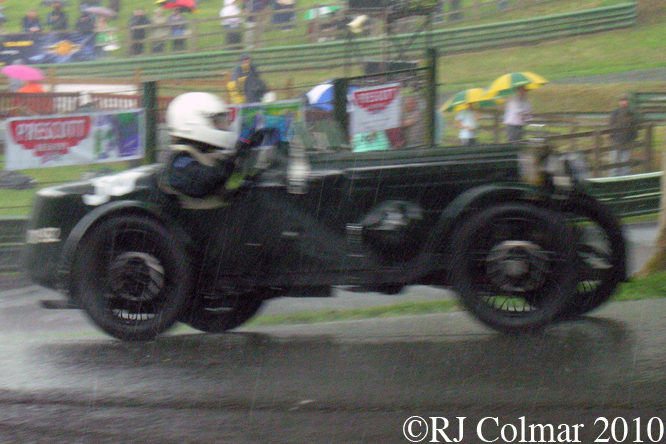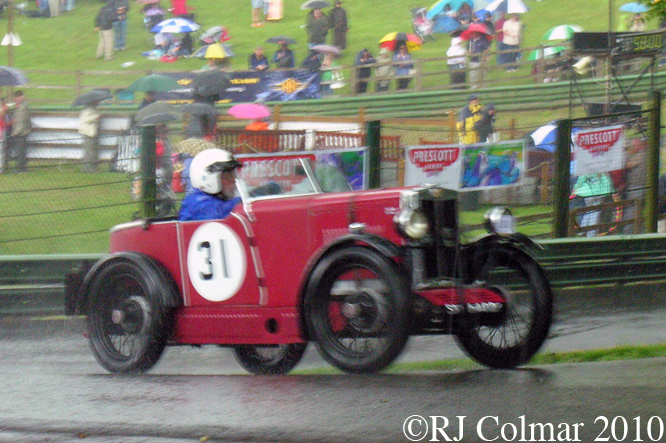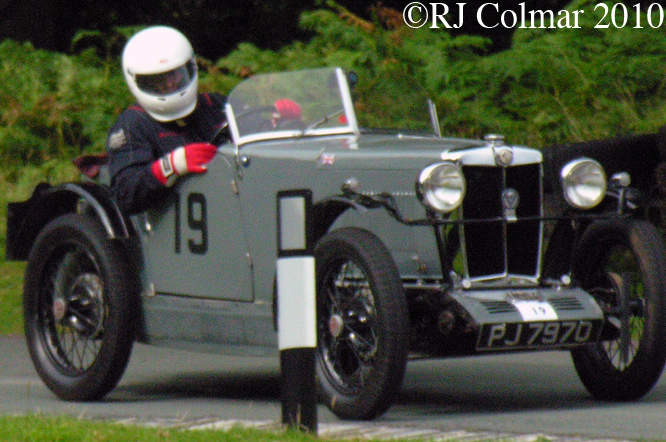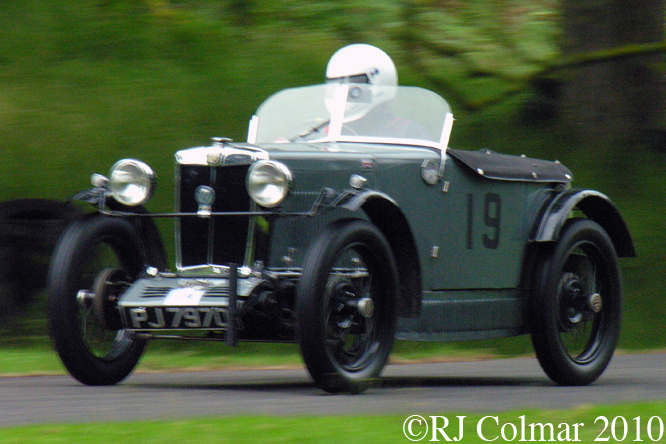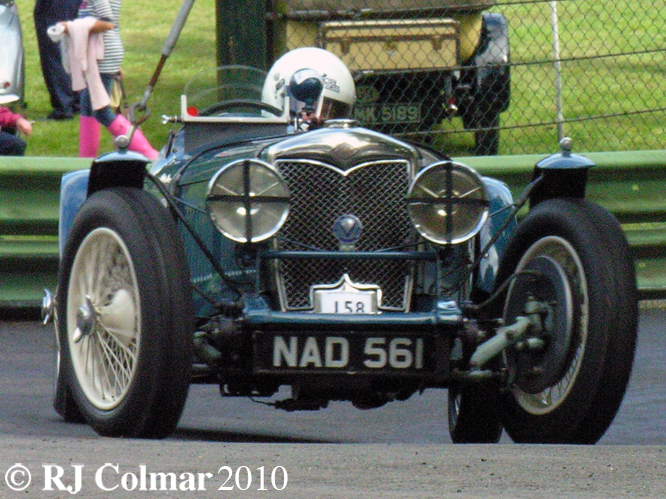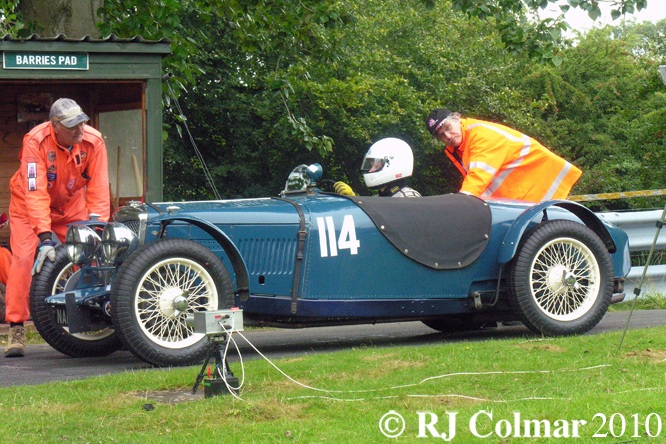In 1913 Vauxhall announced their replacement for the Vauxhall D-Type known officially as the 30-98 or E-Type. 13 chassis were built before the Great War of 1914 – 1918, during which period Vauxhall fulfilled orders from the War Department to build the older D-type models for the use of nobility and Generals alike.
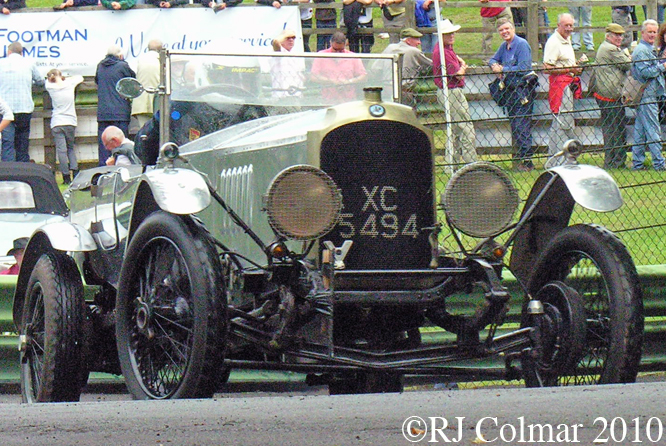
Between the cessation of hostilities and 1922 it is thought around 270 further 30-98 E-types were built with 90 hp 4,525 cc / 276 cui four cylinder side valve engines which gave the car when striped down a 100 mph capability. Above Mark Butterworth negotiates the Pardon Hainpin at Prescott in his 1921 model. Unlike the equally fast contemporary Bentleys, Vauxhall 30-98 models only acquired front brakes during the production span of the model.
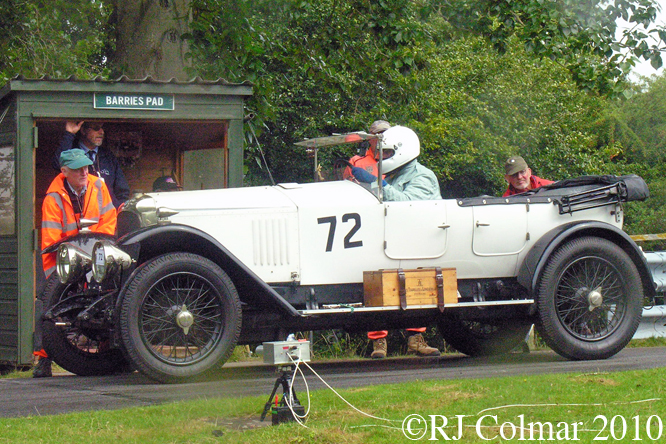
The 30-98 E type was fitted with an improved 115 hp overhead valve engine in 1922, known as the OE to distinguish it from its older side valve engined siblings. Above Phil Dobbin can be seen lining up his 1924 30-98 OE for the start of a run up the hill at Loton Park.
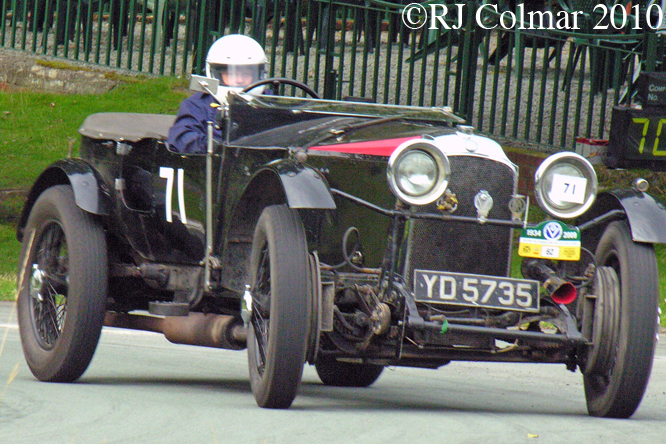
1924 was the most successful year for the 30/98 E-type when 111 examples were built. Nicola Quartermaine’s 30-98 seen above negotiating the Triangle at Loton Park above comprises an older 1921 pre OE chassis and a 1924 4224 cc / 258 cui OE motor.
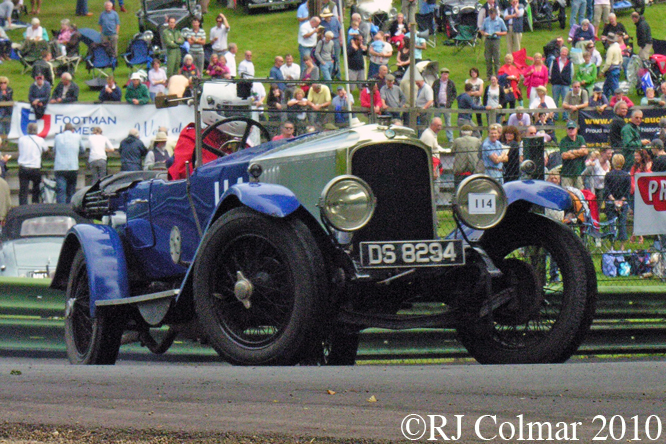
Around 60% of all 30-98 E-types, like the 1924 chassis OE 102 driven by Roger Thorpe at Prescott above were exported to Australia, some have since made their way back to the mother land.
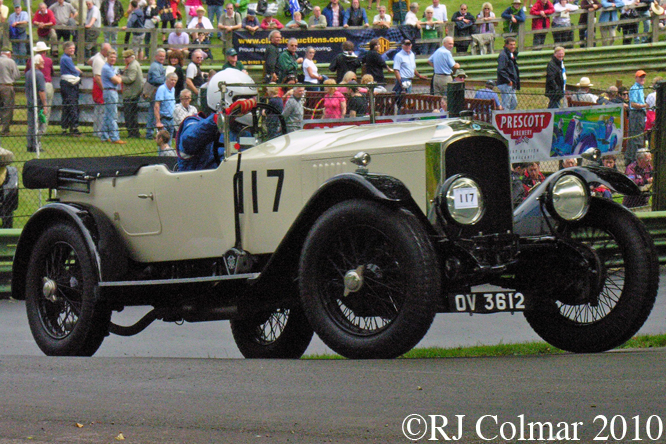
Vauxhall 30-98 E-types were available with either 4 seater tourer or 2 seater ‘Wesum’ boat tail body work with a ‘dicky’ (fold out) seat in the boat tail from the factory, alternatively a chassis could be ordered and sent to a coachworks for a bespoke body. Grosvenor Carriage Company for example, part of the Vauxhall dealer Shaw & Kilburn empire, built bodies for Vauxhalls exclusively during the production life of the 30-98. Above Adam Jones drives a 1925 4 seater with a tourer body, similar to all the vehicle bodies featured in today’s post. Note the absence of a drivers door on all of the vehicles featured in today’s post !
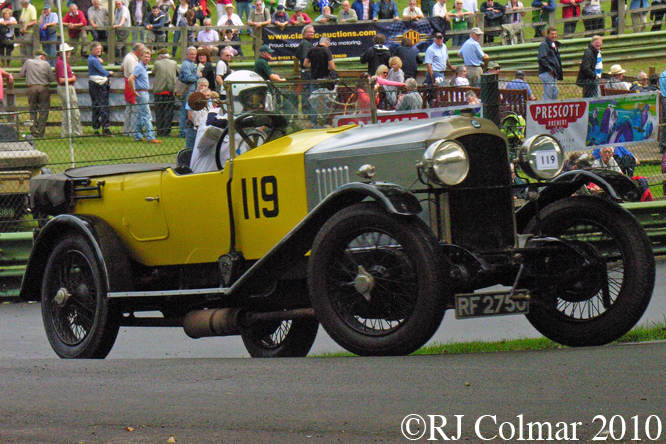
The class leading speed and later 4 wheel braking of the 30-98 was not enough to deliver consistent earnings for Vauxhall and in 1925 the company was sold for US$ 2.5 million to General Motors who set about challenging Ford at a lower end of the UK market than Vauxhall had hitherto catered for. Above Dr Nick Bell above drives a 1927 30-98 OE tourer, chassis OE 304, one of the last of the in total 312 OE’s built since 1922.
Thanks for joining me on this E-Type edition of ‘Gettin’ a li’l psycho on tyres’ I hope you will join me again tomorrow. Don’t forget to come back now !
